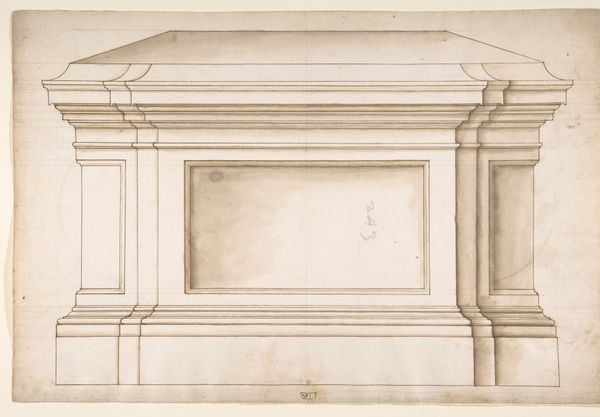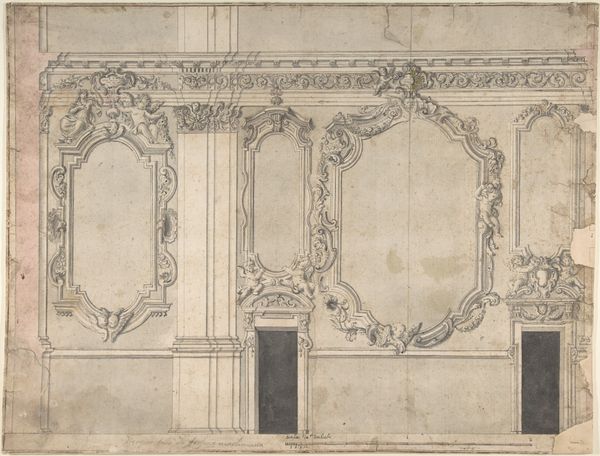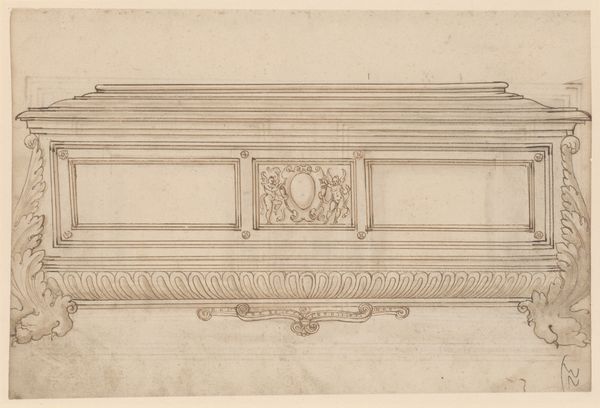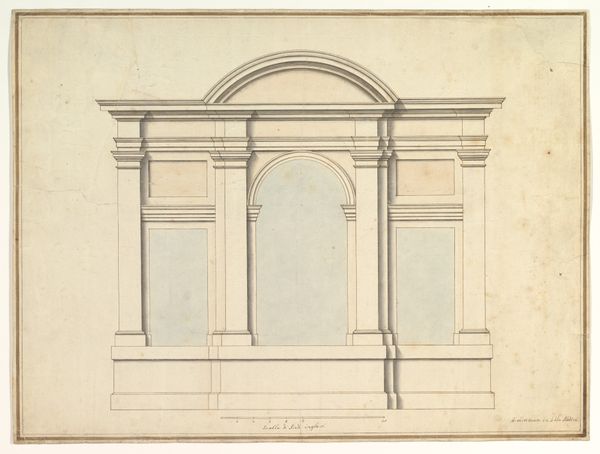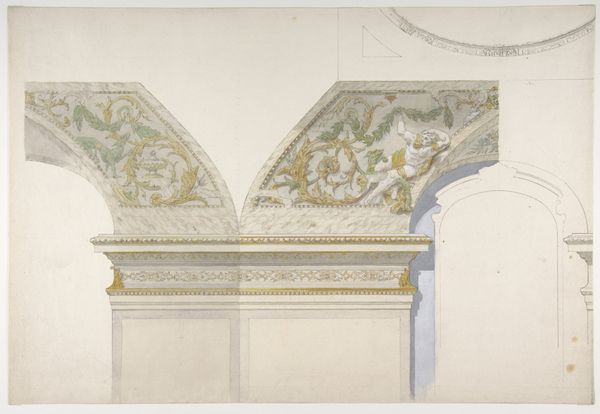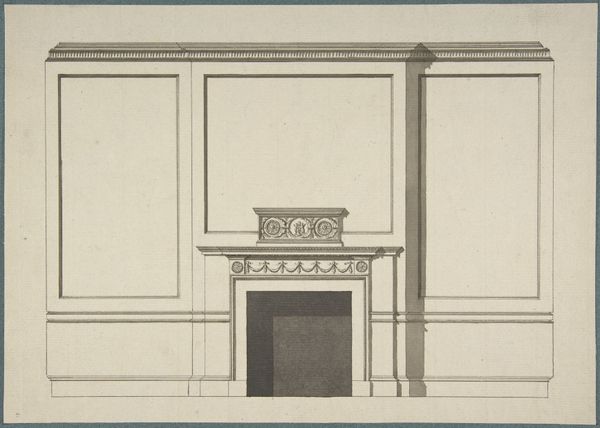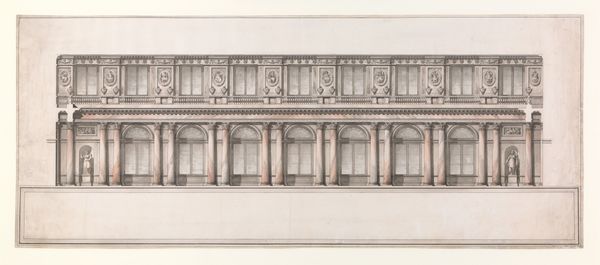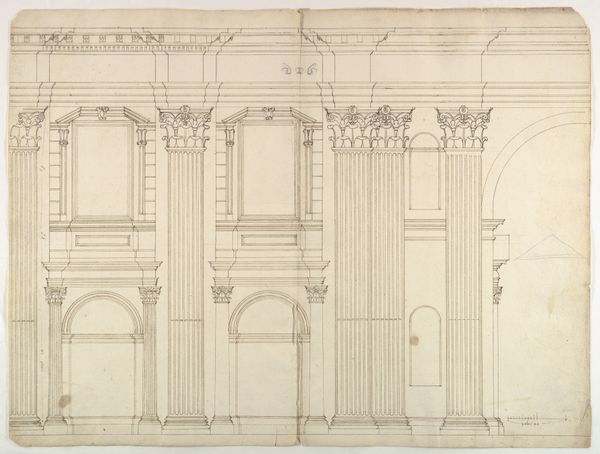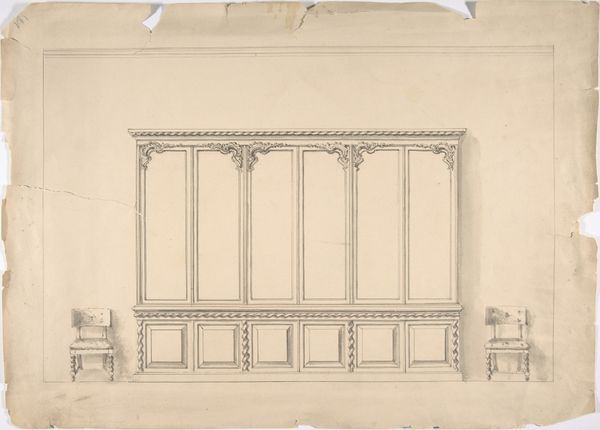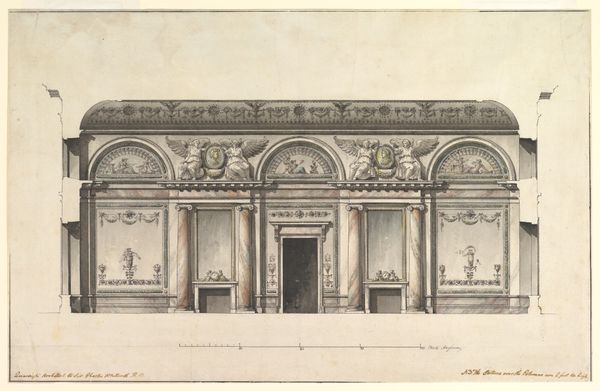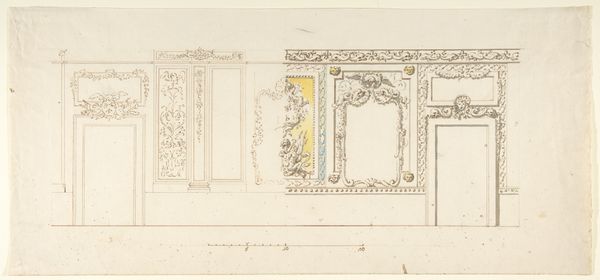
Design for wall panels with putti and flowered garlands 1850 - 1900
0:00
0:00
Dimensions: Overall: 10 7/16 x 14 13/16 in. (26.5 x 37.6 cm)
Copyright: Public Domain
Curator: This delicate watercolor and pencil drawing presents a design for wall panels featuring putti and flowered garlands. Attributed to Jules-Edmond-Charles Lachaise, it was created sometime between 1850 and 1900, and now resides in the Metropolitan Museum of Art. Editor: It's ethereal, isn't it? A whispered aspiration of elegance. The almost-sepia palette gives it this wistful quality. You sense it could be a monument of artistic power... or the fragile dream of an artist at work. Curator: Exactly! Its neoclassical style situates it within a broader cultural context, reflecting the values of order and harmony prized by elite society at the time. One can imagine how it might contribute to their identity or sense of purpose in life, through a built environment like the walls it aims to embellish. Editor: Yet, who decided that these elite get access to the beautiful walls? It's a fascinating tension: these light-hearted, ostensibly apolitical motifs—the chubby putti, garlands—serve to naturalize power structures and socio-economic inequality, which often serve to silence or exclude people outside of those structures. Curator: Precisely. It invites us to examine how the politics of imagery play out through spaces like the Metropolitan Museum, and consider how these types of displays communicate social control or dominance. Editor: Thinking about spaces is vital. So how might exhibiting these design sketches engage with contemporary issues such as representation, access, or even the decolonization of museums and institutions that inherited such designs? How many people throughout history never had the honor to see these type of interior wall ornaments. Curator: Right, exhibiting this drawing raises so many critical questions about its power, history and access to those in power throughout history, Editor: Indeed, reflecting on these issues helps us to consider design from a critical standpoint, looking for who's benefiting the most out of them. Curator: I appreciate your observations, and I hope listeners walk away with a renewed appreciation of both the technical artistry, the context and ethical problems this work invites.
Comments
No comments
Be the first to comment and join the conversation on the ultimate creative platform.
